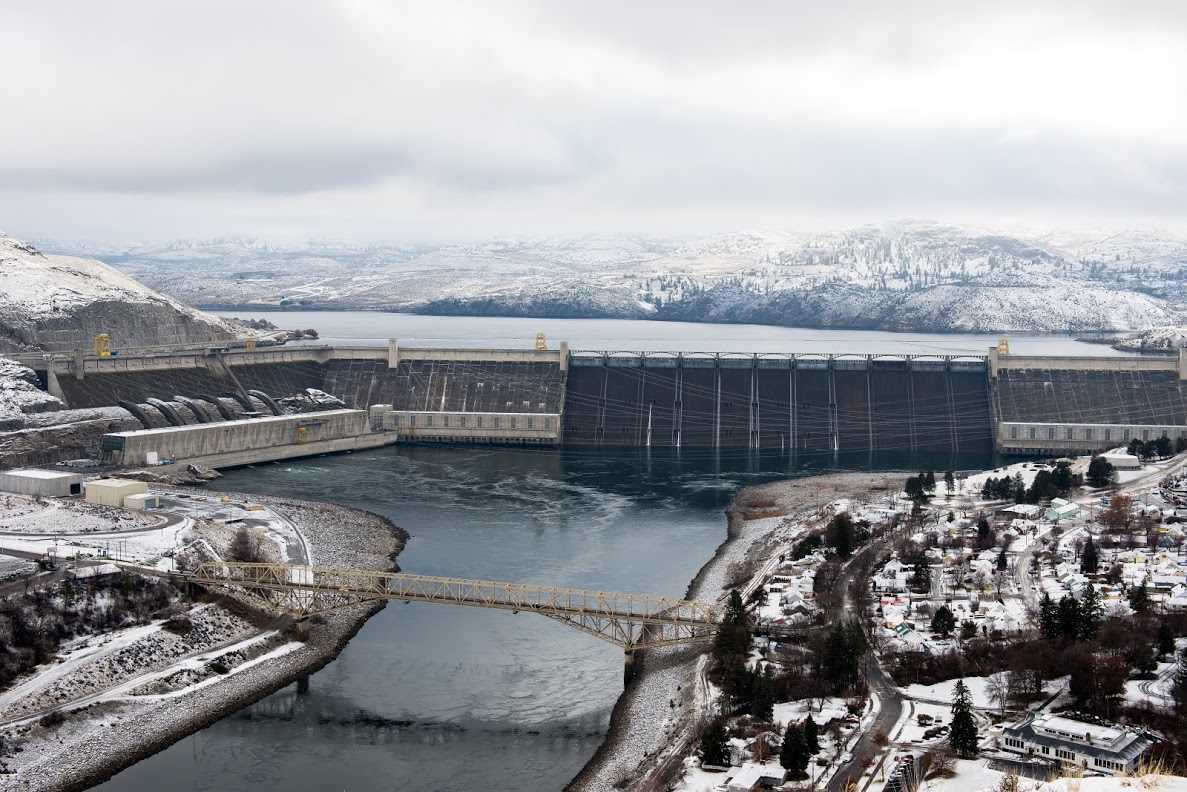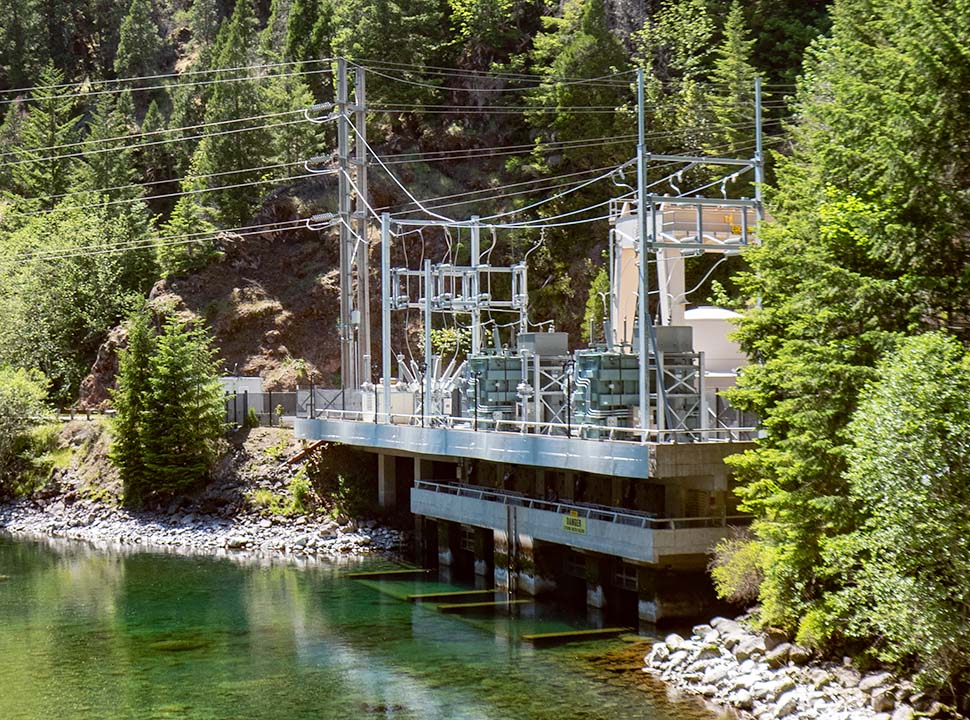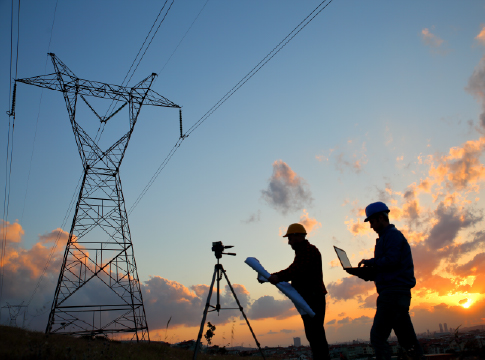Related News
Related News
-
2024 Public Power Week Poster Contest
To celebrate Public Power Week, EWEB is held our annual poster contest for fifth graders in our service area. Help us choose the winners.
Find Out More -
Smart meters make UO move-in easier
Automatic move-in service order processing makes signing up for electric service easy for UO students and the entire Eugene community, while keeping utility vehicles off the road and lowering carbon emissions.
Find Out More -
EWEB customers achieve remarkable results in environmental stewardship through EWEB's Lead Green programs
Subscribers of EWEB's Lead Green programs helped reduce carbon emissions in 2023 by 730 metric tons of CO2e.
Find Out More -
EWEB prepares to re-energize the new Currin Substation
The rebuilt substation will increase load capacity, improve power reliability, and incorporate seismic resiliency to ensure service to our community for generations.
Find Out More -
EWEB, SUB and RWD join forces at Lane County Fair to distribute water to fairgoers
The Eugene Water & Electric Board, Springfield Utility Board and Rainbow Water District are teaming up for the 9th year to provide fairgoers with clean, cold free water.
Find Out More -
Demand for EWEB electricity during heatwave nearly broke all-time summer record
Climate-driven weather extremes, home electrification, high-tech manufacturing and data centers will cause electricity demand to surge across the Pacific Northwest.
Find Out More -
EWEB explores rate increases to cover rising costs and to modernize infrastructure
Amid rising inflation and other challenges, rate increases are necessary to maintain reliable utility services and fund critical investments in Eugene’s water and electric infrastructure.
Find Out More -
EWEB prepares for rising energy demand as weekend heat wave arrives
Electricity supply is sufficient for now, but new supplies will be necessary in the years ahead to keep pace.
Find Out More -
EWEB preparing for expected surge in electric vehicles
Electric vehicle (EV) sales are poised to skyrocket in the years ahead as technology improves, more models hit the market, prices fall and regulations limit the sale of gas-powered vehicles. And EWEB is preparing for this surge.
Find Out More -
Community members can test out climate-friendly e-bikes at E-Bike Expo on Saturday
EWEB encourages Eugene residents to ride into summer on clean, accessible e-bikes, with a $300 e-bike rebate.
Find Out More -
EWEB invests in satellite-based forestry analytics for vegetation management
EWEB maintains over 1,300 miles of overhead transmission and distribution lines. To aid crews in identifying hazardous vegetation growth in a sometimes heavily forested service territory, EWEB is utilizing a new satellite-based forestry analytics software called Overstory.
Find Out More -
Tips to stay cool while saving money this summer
June is quickly approaching, and that means summer weather is just around the corner. Before you turn up the air conditioning and see an increase in your utility bill, try these tips to prepare your home for warmer weather to keep your home cool.
Find Out More -
EWEB offering additional energy efficiency supplement to qualified customers
Current EWEB residential electric customers may qualify to double their energy efficiency rebates with a limited time supplement.
Find Out More -
EWEB opens application for 2024 Electric Mobility Community Grants
Grant awards of up to $30,000 to cover costs associated with electric mobility projects.
Find Out More -
Upgrades to Eugene's downtown electric network continue
You may have noticed construction this week on the corner of 7th and Pearl Street. That’s because crews replaced a corroded, aging vault with an innovative, new Voltek vault. The Voltek design allows for the new infrastructure to be built inside of the existing aging vault. We’re able to install the new vault while the cables are still energized, minimizing disruption to customers and traffic while cutting construction time in half.
Find Out More - Show More
EWEB could need additional low-carbon, on-demand electricity, new analysis shows
June 15, 2023 • Aaron Orlowski, EWEB Communications

EWEB may need more than just hydropower, wind and solar farms, and utility-scale batteries to meet Eugene’s electricity needs in the years ahead, if demand for electricity rises quickly, according to a new analysis.
To meet future needs, EWEB might need to procure alternative sources of low-carbon electricity that can generate energy on demand, such as biomass plants that burn woody material and advanced small modular nuclear reactors (SMR).
“There are days when the weather is frigid and demand for electricity is high as people crank up their heaters to warm their homes, but the wind isn’t blowing, clouds are blocking the sun and stream flows are low,” said Brian Booth, EWEB’s chief energy resource officer. “On those days, wind, solar and hydropower won’t be enough to meet our needs. We’re going to need to turn to another type of resource so we can continue to reliably deliver electricity to our customers.”
The new analysis is part of EWEB’s ongoing Integrated Resource Planning (IRP) process. The IRP process uses advance computer modeling software to forecast Eugene’s electricity needs 20 years into the future and identify potential portfolios of electricity sources – such as hydropower, wind, solar, batteries, biomass and small modular nuclear reactors – that could best meet those needs. The new analysis builds on an initial set of results EWEB published in December 2022.
The IRP analysis will help EWEB weigh the tradeoffs between various energy resources in the years ahead as the utility grapples with choices about procuring additional energy resources. EWEB will publish a completed report in July and will publish a new IRP analysis every two years.
Hydropower, which is abundant in the Northwest, forms the foundation of every portfolio suggested so far. Stacked on top of that are new wind farms, utility-scale batteries and customer programs aimed at reducing energy demand. In the latest analysis, which examined what happens when energy demand rises quickly, additional on-demand sources of renewable energy become necessary.
Every portfolio must be 95% carbon-free by 2030 to abide by EWEB’s Climate Change Policy.
The analysis reveals that maintaining a reliable, affordable and environmentally responsible electricity supply will require a diverse mix of resources from different categories that balance each other out.
“Hydropower is the foundation. We can add in intermittent renewables such as wind and solar that provide cheap carbon-free energy, but only when the wind is blowing, and the sun is shining. We can then supplement that with batteries and similar technologies to store that energy for short time periods to dispatch it when it’s needed,” Booth said. “But the last category is the hardest. We need low-carbon energy sources like biomass, nuclear and emerging technologies that have plenty of fuel on hand and that we can control so that we can maintain electric reliability.”
“To achieve full decarbonization, we’re going to need resources from each of those categories,” Booth added. “In particular, the IRP is showing we have a need for energy storage and generating resources that we can depend on to get us through the coldest, darkest days of the winter.”
New analysis builds on initial IRP analysis.
EWEB published the first set of IRP results – called a “reference case” – in December. Those results suggested that one promising option for meeting Eugene’s future energy needs for the next two decades is to continue to rely on hydropower from large dams on the Columbia River supplied by the Bonneville Power Administration (BPA), while supplementing with new utility-scale batteries and new wind farms.
The results in the reference case were influenced by certain assumptions EWEB made about the future. The reference case assumed that Eugene would experience only a moderate level of electrification. It assumed regulations would permit EWEB to buy only enough resources to meet typical electricity demand. And it assumed that the costs of transmitting energy from wind and solar farms hundreds of miles away on the east side of the Cascade Mountains would increase at only a moderate pace.
To do the new analysis, EWEB’s team altered those key assumptions. This prompted the modeling software to suggest alternative optimal mixes of energy resources.
All suggested portfolios of energy resources still had to meet key requirements that EWEB designed into the analysis process to reflect the utility’s core values of reliability, affordability and environmental responsibility. Each portfolio had to provide enough energy to meet EWEB’s peak needs, which tend to occur on the coldest days of winter. Each portfolio had to do so at the lowest cost possible. And each portfolio had to be 95% carbon-free by 2030, in alignment with EWEB’s Climate Change Policy.
The new analysis suggested portfolios that continue to emphasize hydropower, wind farms and batteries. But the new alternative portfolios added in additional dispatchable energy resources that can generate electricity on-demand – most notably biomass and small modular nuclear reactors (SMR).
New results suggest need for low-carbon, on-demand energy resources.
The new analysis tweaked those three assumptions, producing three different portfolios of energy resources.
15% planning reserve margin
For the first, EWEB assumed that a region-wide program would require EWEB to acquire enough resources to have a 15% buffer above the utility’s average peak needs, called a “planning reserve margin.”
This is a likely requirement in the years ahead. EWEB and utilities across the Western U.S. are developing a reliability program that is meant to incentivize utilities to invest in energy generating resources that will help maintain a reliable grid. This program – called the Western Resource Adequacy Program – will help the region avoid rolling blackouts when electricity demand is at its highest. The details of the program are under development, but EWEB will almost assuredly be obligated to meet at least a 15% buffer, and possibly more.
To help meet those reliability margins, the analysis suggested EWEB turn to biomass plants, conservation and small modular nuclear reactors (SMR).
Higher electrification
For the second, EWEB assumed that more customers would switch to electric heating and appliances, with 50% of residential buildings in Eugene that are currently using natural gas heat switching to electric. This is a likely to happen because of electrification incentives in the Inflation Reduction Act, as well as regulations aimed at reducing fossil fuel use. With this assumption, peak demand in 2042 would be 8% higher than in the reference case.
To meet this rising demand, the analysis suggested procuring small modular nuclear resources starting in 2030, when demand from electrification begins to ramp up, and adding in biomass a little later.
Transmission constraints
For the third, EWEB examined the impacts of higher transmission costs. High-voltage electric transmission lines bring energy from east of the Cascade Mountains, where wind and solar are more abundant, to the west side of the Cascades, where EWEB customers use it. But current transmission lines are close to maxed out, and new lines are difficult to build.
If transmission costs are twice as high, then the cost of energy from wind farms in Wyoming and Montana rises. The “high transmission” alternative portfolio analysis suggested that this makes local solar – assuming its transmission costs are very low – cost competitive, along with biomass plants and small modular nuclear reactors.
Biomass and small modular nuclear offer solutions and tradeoffs.
In each of the analyses, EWEB’s modeling software suggested portfolios with more biomass and small modular nuclear than it selected in the reference case.
At biomass facilities, woody material is burned to generate electricity. In Oregon, that material typically comes from lumber industry waste and meets the standards for renewable energy as defined by the Oregon Renewable Portfolio Standard. But there are concerns about the air quality impacts of burning the material.
Small modular nuclear reactors (SMR) are a nascent technology with strong support from the federal government. The U.S. Nuclear Energy Regulatory Commission has approved initial designs, and utilities in the Western U.S. and around the world are signing contracts for SMR.
SMR differs from traditional nuclear plants in key ways. The reactors are far smaller and are manufactured offsite then delivered in modular units. The reactors also contain passive safety features in which the reactor automatically shuts down if a problem arises, negating the risk of a meltdown.
For EWEB, SMR represents a zero-carbon, on-demand energy resource that provides significant benefits for grid reliability.
“In the future, other emerging technologies, such as geothermal, may fill the same roles as biomass and SMR. We’re keeping a close eye on these new technologies as they develop,” Booth said. “But the lack of accurate and consistent pricing and other data makes it difficult to model these other emerging resources.”
Electric vehicle charging programs offer cost savings.
The new analysis also found that EWEB could develop programs to keep costs in check by better managing charging of electric vehicles.
EWEB forecasts that electric vehicle charging will be a major contributor to peak electricity demand in the coming decades. If EV owners plug in their vehicles after work, they will increase peak demand in the evening hours between 5 and 9 p.m. – when demand is already high.
But if EWEB can convince EV owners to charge their vehicles at other times, such as overnight between 10 p.m. to 6 a.m., peak demand won’t be as high and EWEB won’t have to buy as many resources. EWEB’s electrification studies found that customer programs aimed at managing EV charging – such as time-of-use rates – could reduce EV peak charging demand by 40%.
“It’s crucial that we partner with our customers to manage electric vehicle charging so we don’t have to buy as many expensive new sources of energy,” Booth said. “If we all work together to charge vehicles at night when there tends to be cheap, excess renewable energy on the grid, then we can both lower overall carbon emissions and reduce costs.”
Next steps
EWEB’s elected Board of Commissioners will discuss the 2023 IRP report and recommended action items at their meeting in July. They will weigh a list of action items that is likely to include conducting additional studies and exploring programs that encourage customers to shift their EV charging to off-peak hours overnight.
Then, EWEB will launch into the 2025 IRP, with analysis focused on BPA product options.
Learn more.
Here in Eugene, we are fortunate to have one of the cleanest power portfolios in the nation, with almost no electricity sourced from fossil fuels.
EWEB’s Integrated Resource Plan (IRP) will analyze possible energy resource portfolios with a goal of creating useful insights for long-term (20-year) electricity supply planning decisions.




